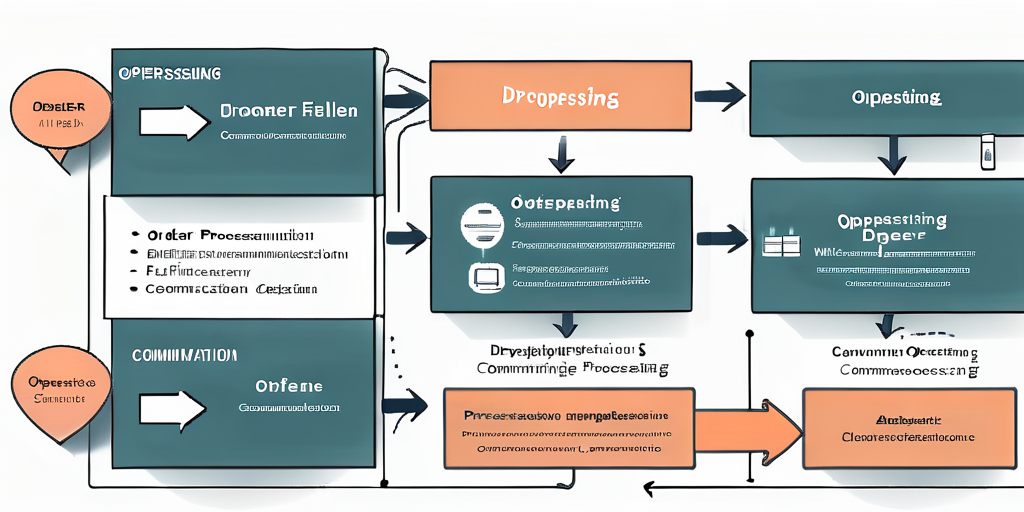Dropshipping has become a popular business model in recent years, allowing entrepreneurs to start their own online stores without worrying about inventory and fulfillment. If you’re interested in starting a dropshipping business, this comprehensive guide will walk you through the steps and provide valuable insights to help you succeed.
Understanding Dropshipping
What is Dropshipping?
Dropshipping is a retail fulfillment method where the store doesn’t keep the products it sells in stock. Instead, when a store sells a product, it purchases the item from a third party and has it shipped directly to the customer. As a result, the seller doesn’t have to handle the product directly, making it an attractive option for new and small-scale online businesses.
Benefits of Dropshipping
One of the key benefits of dropshipping is that it eliminates the need for upfront inventory investment. Traditional retail models require you to purchase inventory in bulk, which can be risky if the products don’t sell well or become outdated. Dropshipping allows you to only pay for the products you’ve already sold, which means you can scale your business without significant financial risks.
Additionally, dropshipping allows you to offer a wide range of products without the need to manage and store them physically. This flexibility enables you to experiment with different niches and test market demand without the burden of holding inventory.
Common Misconceptions about Dropshipping
While dropshipping offers many advantages, it’s important to address some common misconceptions. Some people believe that dropshipping is a quick and easy way to make money without much effort. However, like any business, dropshipping requires hard work, dedication, and consistent effort to succeed.
Another misconception is that dropshipping doesn’t require any upfront costs. While it’s true that you don’t need to invest in inventory, you still need to invest in building and marketing your online store. This includes expenses such as website development, advertising, and customer acquisition.
Furthermore, it’s crucial to understand that dropshipping is not a one-size-fits-all solution. Success in dropshipping relies on finding the right suppliers, establishing strong relationships with them, and ensuring smooth logistics and timely delivery. It requires continuous monitoring and adjustment to meet customer expectations and maintain a competitive edge in the market.
Moreover, dropshipping is not immune to challenges. Since you rely on third-party suppliers to fulfill orders, there is a risk of inventory issues, such as items going out of stock or delayed shipments. It’s important to have contingency plans in place and maintain open communication with your suppliers to mitigate these risks and ensure a seamless customer experience.
Preparing for Your Dropshipping Business
Identifying Your Niche
Before diving into dropshipping, it’s crucial to identify a profitable niche. A niche is a specific segment of the market that you’ll cater to. Research different industries and products to find a niche that has sufficient demand but isn’t oversaturated with competitors. Consider your interests, expertise, and target audience preferences to narrow down your niche.

When choosing your niche, it’s important to think about your own passions and interests. By selecting a niche that aligns with your own hobbies or expertise, you’ll not only have a deeper understanding of the products you’re selling, but you’ll also be more motivated to put in the necessary effort to make your business successful. For example, if you have a passion for fitness and wellness, you might consider focusing on dropshipping products related to fitness equipment, supplements, or athleisure wear.
Market Research and Competition Analysis
Once you’ve identified a potential niche, conduct thorough market research to understand customer needs, preferences, and buying habits. Analyze your competition to see what products they offer, their pricing strategies, and their target market. This information will help you identify gaps in the market and develop a competitive advantage.
Market research is not a one-time task, but an ongoing process. Stay updated on industry trends, consumer behavior, and emerging markets to ensure that your dropshipping business remains relevant and competitive. By continuously monitoring the market, you’ll be able to adapt your product offerings and marketing strategies to meet the changing demands of your target audience.
Setting Your Business Goals
Define your long-term and short-term goals for your dropshipping business. This will help you stay focused and motivated as you progress. Set achievable and measurable goals that align with your vision. For example, your short-term goal might be to launch your online store, while your long-term goal could be to reach a certain monthly revenue milestone.
It’s important to break down your goals into smaller, actionable steps. This will make them more manageable and allow you to track your progress along the way. For instance, if your long-term goal is to reach a certain monthly revenue milestone, you can set short-term goals such as increasing your website traffic, optimizing your conversion rate, or expanding your product range. By setting specific goals and regularly evaluating your performance, you’ll be able to make informed decisions and make necessary adjustments to achieve success.
Setting Up Your Dropshipping Store
Choosing the Right E-commerce Platform
When starting your dropshipping business, selecting the right e-commerce platform is crucial. There are various options available, each with its own features and pricing plans. Consider factors such as ease of use, customization capabilities, SEO features, and integration with dropshipping suppliers. Popular e-commerce platforms include Shopify, WooCommerce, and BigCommerce.

Shopify, known for its user-friendly interface and extensive app store, offers a wide range of themes and customization options. It also provides seamless integration with various dropshipping suppliers, making it a popular choice among entrepreneurs. WooCommerce, on the other hand, is a powerful plugin for WordPress websites, allowing you to have full control over your online store’s design and functionality. With its vast array of plugins and extensions, you can easily enhance your store’s features and optimize it for search engines.
BigCommerce, another leading e-commerce platform, offers a robust set of features tailored for dropshipping businesses. It provides advanced SEO tools, built-in integrations with popular dropshipping suppliers, and a highly scalable infrastructure. This makes it an ideal choice for businesses looking to grow rapidly in the competitive e-commerce landscape.
Creating Your Online Store
Once you’ve chosen an e-commerce platform, it’s time to create your online store. Design a visually appealing and user-friendly website that reflects your brand and appeals to your target audience. Ensure that your store is mobile-responsive and optimized for search engines. Include high-quality product images and detailed descriptions to entice customers.
Consider implementing a clean and intuitive navigation menu that allows customers to easily browse through your products. Utilize a responsive layout that adapts seamlessly to different screen sizes, providing a smooth shopping experience on both desktop and mobile devices. Additionally, optimize your store’s loading speed to minimize bounce rates and improve customer satisfaction.
Remember, your online store is the face of your business, so invest time and effort into creating a visually stunning and user-friendly interface that leaves a lasting impression on your customers.
Selecting Your Dropshipping Suppliers
Choosing reliable and trustworthy dropshipping suppliers is crucial for the success of your business. Research and vet potential suppliers to ensure they have a good track record of fulfilling orders accurately and on time. Consider factors such as product quality, pricing, shipping options, and customer support.
Look for suppliers who offer competitive pricing without compromising on product quality. Efficient shipping options are also essential to ensure timely delivery of orders to your customers. Consider suppliers who offer multiple shipping methods, including expedited options, to cater to different customer needs.
Furthermore, prioritize suppliers who provide excellent customer support. Prompt and helpful responses to your inquiries or concerns can make a significant difference in providing a positive customer experience. Building strong relationships with your suppliers will help you provide excellent customer service and ensure smooth operations.
Remember, selecting the right dropshipping suppliers is a continuous process. Regularly evaluate their performance and be open to exploring new suppliers who may offer better products, pricing, or support.
Managing Your Dropshipping Operations
Inventory Management
While you don’t physically handle inventory in dropshipping, it’s still essential to manage your product inventory effectively. Regularly monitor your suppliers’ stock levels to prevent selling out-of-stock products. Automate inventory updates and implement systems to track product availability to avoid disappointing customers and damaging your reputation.

Handling Orders and Shipping
Once you start receiving orders, it’s crucial to manage the order fulfillment process efficiently. Communicate with your suppliers to ensure timely processing and shipping of orders. Provide customers with tracking information and a clear estimate of shipping times. Respond promptly to customer inquiries and resolve any issues that arise during the shipping process.
Dealing with Returns and Refunds
Handling returns and refunds is an inevitable part of running a dropshipping business. Establish clear policies and procedures for handling returns and ensure that they are communicated to customers upfront. Work closely with your suppliers to streamline the return process and ensure that refunds are processed promptly. Providing a positive and hassle-free customer experience will help you build trust and loyalty.
Starting a dropshipping business requires strategic planning, research, and ongoing effort. By understanding the fundamentals of dropshipping, preparing your business, setting up your online store, and managing your operations effectively, you can create a successful and profitable dropshipping business. Remember to continuously adapt and improve your strategies to stay ahead in the competitive e-commerce landscape.


